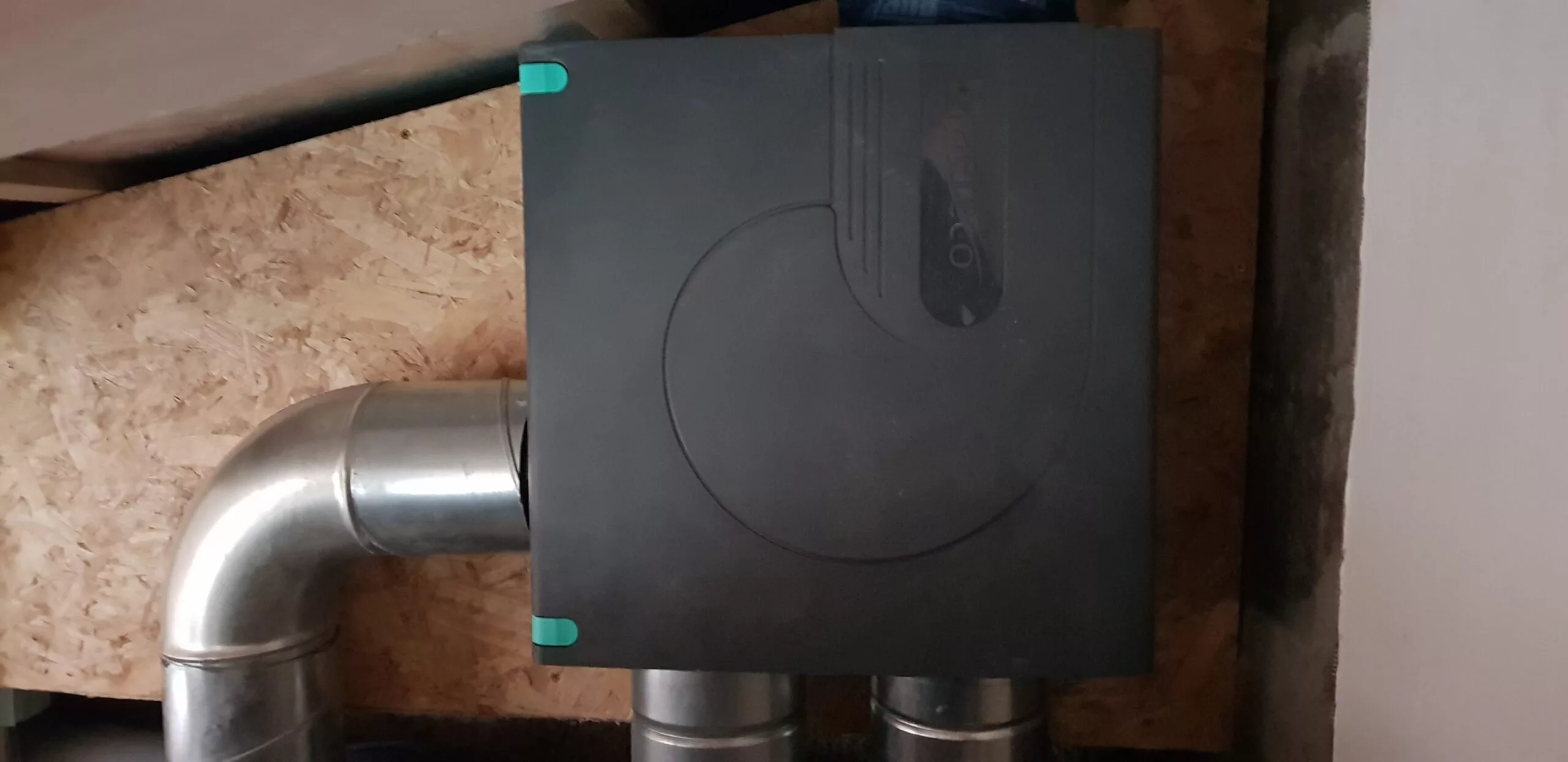DCV (Demand Controlled Ventilation) is a type of ventilation system that adjusts the amount of fresh air supplied to a building based on the number of people present and the level of air pollutants detected in the space. The information on this DCV FAQ page provides answers on how demand controlled ventilation works, its benefits and potential drawbacks.
-
What is DCV?
Every home – and individual room – has a rising or falling need for ventilation. DCV is a way of ventilating buildings that adjusts air flow rates automatically and quietly, according to actual demand. When there is no demand (which can be more than half the time, e.g. when the building is empty or there is no excess moisture in the air) the system will reduce the air flow and save energy. When there is demand (e.g. after showering, cooking or the release of odours), DCV kicks in by opening humidity sensitive air inlets and demand controlled exhaust units, and ensures that the room is appropriately ventilated.
-
How is air supplied and extracted?
As with any ventilation system, for it to work effectively it requires a holistic approach. DCV requires an inlet/supply and extract air strategy. These are achieved as follows:
- Supply air: Fresh air is introduced via either wall vents or trickle vents in your windows (you can replace existing trickle vents if you have them, or if you’re installing new windows, new trickle vents can be fitted into them). If you don’t have an option for replacing the trickle vent then normally a wall vent would be required for bedrooms, living rooms and other supply air rooms. These would require a 110mm hole to the outside to enable the vents to be fitted
- Extract air: Wet, humid air and odours are extracted from all wet rooms (e.g. kitchens, bathrooms, WCs, utility rooms). These rooms have a vent located as close as possible to the humidity source. Each vent has a special passive mechanism using nylon strips which react very well to humidity in the air. If humidity rises (e.g during a shower or cooking) then the valve will open, and moisture and smells are extracted via the duct work back to the DCV centralised fan unit, so ventilation rates will naturally increase at the vent with any humidity rise.
-
Does a DCV system run all the time?
Yes. Similar to an MVHR system, DCV will run all the time. When humidity levels are low, the system will reduce the ventilation rate and as a humidity rise occurs in one of the vent rooms, the ventilation rate will automatically increase on that particular vent until the humidity levels have dropped and then the system will go back to its normal lower level of ventilation.
-
Why would I install DCV instead of MVHR?
Where MVHR has been ruled out due to cost or space considerations, we think that DCV is the most efficient way to balance indoor air quality and energy savings in a building, for the reasons below:
- Cost – DCV costs around half the price of MVHR. Price depends on the size of your house and how easy it is to install. Contact us for an estimate.
- Airtightness is a very important factor in terms of energy loss through uncontrolled draughts, so minimising draughts should be the priority in any refurbishment or new build project. However, in some buildings it is not possible to drastically improve the airtightness, so you won’t get the heat recovery benefits of MVHR. In this instance, we’d say that DCV is a great alternative.
- Ventilation often accounts for a large proportion of the thermal losses in a dwelling, sometimes as much as 50%. While this is true with the majority of traditional ventilation systems, such as typical extractor fans that you have in bathrooms and kitchens, Aereco’s DCV systems preserve heat in less occupied rooms and dwellings by automatically reducing the airflow, resulting in a reduced and controlled heating demand.
- Unlike an MVHR system, which requires ducting to living spaces and bedrooms, a DCV system only extracts from wet rooms, making it much easier and cheaper to install.
- Due to the fact the DCV fan units don’t cost as much as an MVHR unit, it is feasible to have more than one fan, if running duct work between different floors or areas of the building is not possible. This makes jobs that would have otherwise not have been possible, achievable.
- Reduced maintenance costs compared with an MVHR system, due to the fact no filter changes are required and fan units have fewer components to go wrong.
-
Why would I install a DCV system over a standard MEV system?
While on some levels a DCV system is similar to other MEV systems, an important distinction is that other MEV systems will just be running all of the time at a set airflow rate and with some boosting with humidity levels. The DCV system we offer is the only one on the market in the UK which has the patented passive humidity control system. Other MEV systems will not react to their environment, meaning they will consume more energy to power, lose more heating energy and be noisier. So we think DCV is the only way to go when comparing this type of ventilation system with others.
-
What maintenance is involved with a DCV system?
Unlike an MVHR system there are no filters to change, and the only maintenance required is between every 6-12 months. The vents should be cleaned and the fan impeller removed to be cleaned. These are both easy tasks which don’t require specialists like us, and we will train you how to do this yourself should you wish to.







